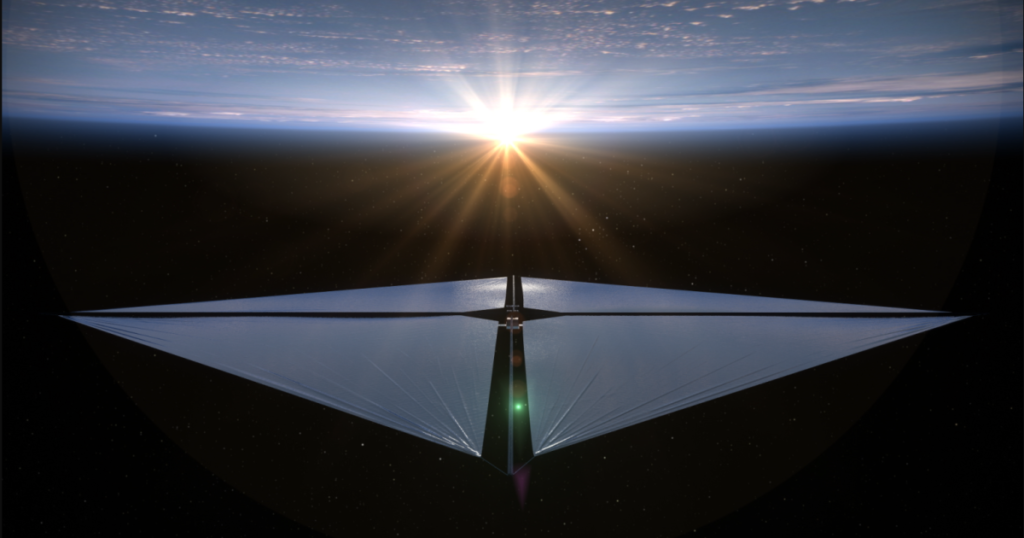NASA is gearing up to launch an advanced solar sail spacecraft later this month. Using a new boom made of lightweight polymer composites, the Advanced Composite Solar Sail System is scheduled to lift off on April 24.
Solar sails are one of those technologies that are almost charming based on their basic principle. We often talk about this or that concept in terms of metaphors or analogies, but solar sails don’t need that. That’s because they aren’t just similar to earthbound sailboats – they operate on exactly the same principle.
The differences are the obvious ones. Sailboats travel on water and are pushed along by the wind. Solar sails travel in a vacuum pushed by the solar winds from the Sun – a plasma flow of mainly protons and electrons that are constantly emitted from the Sun at differing speeds and densities. In that practical sense, it can be harnessed in exactly the same ways our atmospheric winds can; like a sailboat, a solar sail can run before the solar wind, tack, heave to, and carry out pretty much any other maneuver.
Advanced Solar Sail
One big difference is that solar sails don’t have much in the way of acceleration because the pressure of the solar wind over a small area is about the equivalent of the weight of a sheet of note paper. However, a solar sail needs no fuel and can accelerate indefinitely. The tricky bit is to make a light enough spacecraft with a large enough sail to be practical.
The sail itself isn’t that much of a challenge. Since the 1960s, mylar plastic films have shown themselves to be up to the job. The real problem is the booms used to hold the sails in position.
“Booms have tended to be either heavy and metallic or made of lightweight composite with a bulky design – neither of which work well for today’s small spacecraft. Solar sails need very large, stable, and lightweight booms that can fold down compactly,” said Keats Wilkie, the Advanced Composite Solar Sail System mission’s principal investigator at the Langley Research Center. “This sail’s booms are tube-shaped and can be squashed flat and rolled like a tape measure into a small package while offering all the advantages of composite materials, like less bending and flexing during temperature changes.”

NASA
The new flexible polymer and carbon composite boom is coupled with a twelve-unit (12U) CubeSat built by NanoAvionics. After the mission launches atop a Rocket Lab Electron rocket from the company’s Launch Complex 1 in Māhia, New Zealand, the spacecraft will go into a Sun-synchronous orbit at an altitude of about 600 miles (~1,000 km) and the sail will deploy in about 25 minutes to cover an area of 860 ft² (80 m²) with the boom unfolding from the size of a hand to 23 ft (7 m) long. Once deployed, the sail will adjust the vehicle’s orbit by angling itself in relation to the solar wind.
If the demonstration mission pans out, it could lead the way to more ambitious designs, including sails up to 21,500 ft² (2,000 m²) in area or half the size of a soccer pitch.
“This technology sparks the imagination, reimagining the whole idea of sailing and applying it to space travel,” said Rudy Aquilina, project manager of the solar sail mission at NASA Ames. “Demonstrating the abilities of solar sails and lightweight, composite booms is the next step in using this technology to inspire future missions.”
Source: NASA


